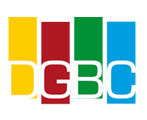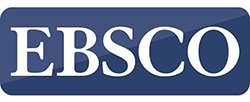Peculiaridades del uso de tecnologías innovadoras en la enseñanza del inglés en instituciones de educación superior
DOI:
https://doi.org/10.46502/issn.1856-7576/2024.18.01.7Palabras clave:
innovaciones, tecnologías innovadoras, innovación educativa, enseñanza del inglés, instituciones de educación superior.Resumen
Se han aclarado las peculiaridades del uso de tecnologías innovadoras en la enseñanza del inglés en instituciones de educación superior. Se revela el significado de los conceptos "innovación" e "innovación educativa". Se muestran los principales criterios de capacidad de fabricación que debe cumplir la tecnología de innovación pedagógica. Se destacan los principios fundamentales por los cuales se llevan a cabo actividades innovadoras en las instituciones de educación superior. Se revelan enfoques que contienen tecnologías innovadoras en la enseñanza del inglés. Se agrupan las tecnologías innovadoras más efectivas y se consideran las tecnologías efectivas para la enseñanza del inglés. que merecen atención en la enseñanza del inglés en instituciones de educación superior (tecnología de aprendizaje interactivo, aprendizaje a distancia, tecnologías multimedia, tecnología de entorno virtual). Teniendo en cuenta las peculiaridades del uso de tecnologías innovadoras en la enseñanza del inglés en las instituciones de educación superior, llama la atención la tecnología de microaprendizaje (aprendizaje del tamaño de un bocado), cuyo contenido y ventajas se muestran en el artículo. Se muestran las ventajas del uso de tecnologías innovadoras en la enseñanza del inglés en instituciones de educación superior. Las principales tareas en la enseñanza de alta calidad del idioma inglés son el desarrollo de las siguientes habilidades básicas: lectura, comprensión auditiva, comunicación y escritura. Se muestra el papel de cada habilidad individual y se revela el contenido de las tecnologías que se pueden aplicar para la mejora y el desarrollo.
Citas
Alqurashi, E. (2017). Bite-sized Learning: Small, Short and Focused. Center for the advancement of teaching. https://sites.temple.edu/edvice/2017/03/29/bite-sized-learning-small-short-and-focused/
Álvarez Martínez, J. A., & Gómez, J. F. (2023). The impact of E-learning and ICT on English language learning: COVID-19 context. Research in Learning Technology, 31. https://doi.org/10.25304/rlt.v31.2941
Cárdenas, J., & Esteban I. (2021). Methodological Experience in the Teaching-Learning of the English Language for Students with Visual Impairment. Education Sciences, 11(9), 515. https://doi.org/10.3390/educsci11090515
Efendiieva, S.M. (2017). Application of the most effective innovations in the practice of English language teaching at the modern stage in Ukrainian universities. Science and Education a New Dimension. Pedagogy and Psychology, 55(127), 12-15. (In Ukrainian)
Hattie, J., & Yates, G. (2013). Visible Learning and the Science of How We Learn. Abingdon: Routledge, 368. ISBN 9780415704991
Herasymenko, Yu. (2021). Innovative technologies in teaching English in institutions of higher education. Youth and Market, 11-12(197-198), 115-120. http://nbuv.gov.ua/UJRN/Mir_2021_11-12_22
Juraeva, I.A (2022). Importance Of Innovative Technologies in Teaching English. Journal for educators teachers and trainers, 13(6), 546-551. https://doi.org/10.47750/jett.2022.13.06.056
Kapitan, T.A. (2021). Use of innovative forms of learning in English language lessons. Proceedings. Series: Pedagogical Sciences, 194, 126-129. https://doi.org/10.36550/2415-7988-2021-1-194-126-129
Kharchenko, T., & Hostishcheva, N. (2022). Microlearning as an innovative technology in teaching English. Foreign language in the professional training of specialists, problems and strategies, materials of the VI international scientific and practical internet conference, 297-299. ISSN 2522-4743 (In Ukranian)
Khrystych, N., & Borysova, N. (2022). The problem of choice of traditional and innovative teaching technologies in the process of formation of future English teachers. Scientific Notes of Ostroh Academy National University: Philology Series, 13(81), 198-201. https://journals.oa.edu.ua/Philology/article/view/3517
Konoplianyk, L.M. (2020). Innovative technologies in teaching English in higher education. National identity in language and culture: a collection of scientific works. Kyiv: Talkom, 258-261. (In Ukrainian)
Кosharna N., Ordynska, I., Hlushkovetska, N., Nehrych, N., & Lysenko, T. (2022). The application of communicative linguistics in the study of foreign languages (an example of the English language). Revista Eduweb, 16(3), 67-78. https://doi.org/10.46502/issn.1856-7576/2022.16.03.5
Kuchai, O., & Demianiuk, A. (2021). Modern technologies of distance learning. Humanitarian studies: history and pedagogy, 2, 77-85.
Kudria, M. (2018). Role of innovative technologies for effective educating and teaching the English language. Higher education of Ukraine in the context of integration to European educational space, 79(I), 165-175. http://osvita.eeipsy.org/index.php/eeip/article/view/271
Kulichenko, A., & Polyezhayev, Y. (2020). Innovative information and communication technologies for ergotherapists applied during English learning in Ukraine. Ad Alta-journal of interdisciplinary research, 10(2), 228-233.
Pudlo, D.S. (2018). Implementation of innovative technologies in the educational process. Na Urok LLC. https://acortar.link/S2lyeL
Radziievska, I., Trepet, G., Radzikhovska, N., Sukhostavets, N., Yuryk, O., & Saienko, V. (2022). Modern achievements and prospects for the development of higher medical education: Ukrainian realities. Amazonia Investiga, 11(55), 114-123. https://doi.org/10.34069/AI/2022.55.07.12
Reida, O.A., Ivleva, K.S., & Hulieva, D.O. (2020). Innovative technologies in the methodology of teaching foreign languages to students of technical specialties. Innovative pedagogy, 20(2), 111-114. https://doi.org/10.32843/2663-6085-2020-20-2-23
Shevchenko, M. (2020). The use of innovational technologies in the process of teaching Ukrainian in a higher school. Young Scientist, 12(88), 356-358. https://doi.org/10.32839/2304-5809/2020-12-88-69
Shuliak, A., Hedzyk, A., Tverezovska, N., Fenchak, L., Lalak, N., Ratsul, A., & Kuchai, O. (2022). Organization of Educational Space Using Cloud Computing in the Professional Training of Specialists. International Journal of Computer Science and Network Security, 22(9), 447-454. https://doi.org/10.22937/IJCSNS.2022.22.9.58
Suleman, N., Sheikh, A., Ali, H., Ali, F., & Rahim, S. (2019). Induction, fortification and primacy of English as a medium of instruction in primary education. Amazonia Investiga, 8(19), 387-393. Retrieved from https://amazoniainvestiga.info/index.php/amazonia/article/view/241
Vasiukovych, O.M. (2020). Innovative learning technologies in the study of professional English in higher technical educational institutions of Europe. Scientific notes. Series: Pedagogical sciences, 191, 52-55. (In Ukrainian)
Vydaichuk, T., Rusachenko, N., Lakhno, N., Moskalchuk, H., & Nesterenko, T. (2022). Using of the language factor in modern conflicts of various levels. Revista Eduweb, 16(3), 177-189. https://doi.org/10.46502/issn.1856-7576/2022.16.03.13
Zacchi, V. J. (2018). Literacies and digital gaming: negotiating meanings in English language teacher education. Revista tempos e espacos educacao, 11(1), 153-168. https://doi.org/10.20952/revtee.v11i01.9831
Descargas
Publicado
Cómo citar
Número
Sección
Licencia
Derechos de autor 2024 Halyna Kharkevych, Olena Kruhlij, Nina Pechko, Nataliia Sobol, Alona Shyba

Esta obra está bajo una licencia internacional Creative Commons Atribución 4.0.















